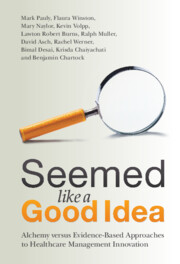 Seemed Like a Good Idea
Seemed Like a Good Idea Where Has the Battleship Been Going, and How Can We Turn It?
Published online by Cambridge University Press: 14 July 2022
A trite, if apt, metaphor for the American health care and insurance system is a battleship that has been sailing in a particular direction for many years, with many of us as free riders in a direction we do not prefer. That direction is characterized by spending growth that outpaces virtually any other sectoral trend in the economy, and by quality and outcome measures that, at best, improve little and, at worst, deteriorate. The battleship takes up 18 percent of gross domestic product (GDP), furnishes employment to nearly 15 percent of the workforce, and consumes a large share of federal and state governmental budgets (Figure 2.1). Even if we could figure out how to cut the power, this dreadnought would continue to coast in the same direction for the foreseeable future. The obvious conclusion is that it has been and will continue to be hard to turn the vessel to go in a different direction. As of this writing, the novel coronavirus pandemic has affected the use of care as well, putting many “normal” services on hold to accommodate sick patients. And while it is too early to conclusively confirm the effect of the pandemic on spending trends, there is likely to be an effect (although even the direction is not known). Once the pandemic stabilizes, consumption of health care services will probably not return exactly to past behaviors, but there will be a strong tendency to slide back. What might help to avoid doing so, and most importantly, what evidence can be currently offered or generated to support efforts to change course?
To save this book to your Kindle, first ensure no-reply@cambridge.org is added to your Approved Personal Document E-mail List under your Personal Document Settings on the Manage Your Content and Devices page of your Amazon account. Then enter the ‘name’ part of your Kindle email address below. Find out more about saving to your Kindle.
Note you can select to save to either the @free.kindle.com or @kindle.com variations. ‘@free.kindle.com’ emails are free but can only be saved to your device when it is connected to wi-fi. ‘@kindle.com’ emails can be delivered even when you are not connected to wi-fi, but note that service fees apply.
Find out more about the Kindle Personal Document Service.
To save content items to your account, please confirm that you agree to abide by our usage policies. If this is the first time you use this feature, you will be asked to authorise Cambridge Core to connect with your account. Find out more about saving content to Dropbox.
To save content items to your account, please confirm that you agree to abide by our usage policies. If this is the first time you use this feature, you will be asked to authorise Cambridge Core to connect with your account. Find out more about saving content to Google Drive.